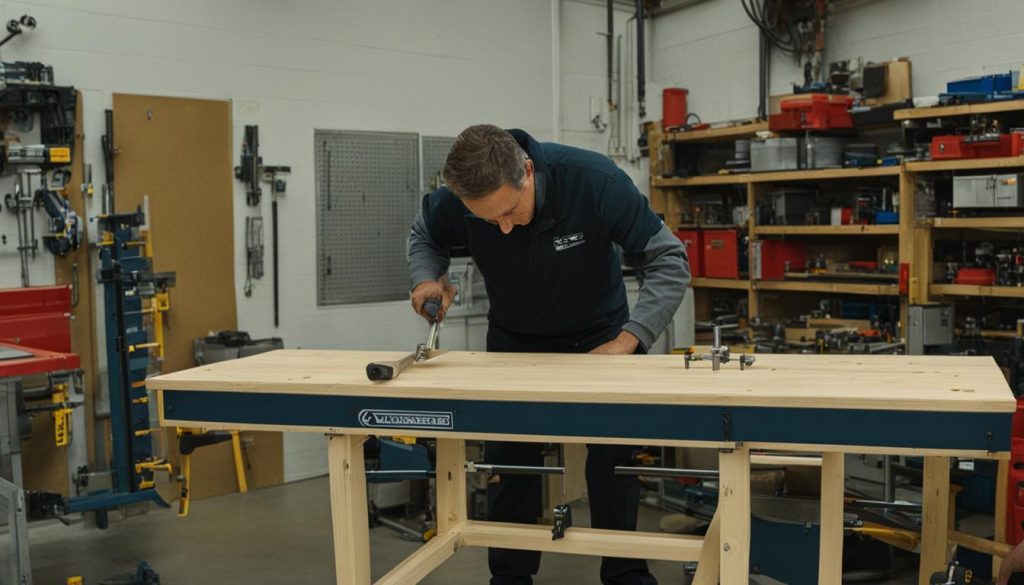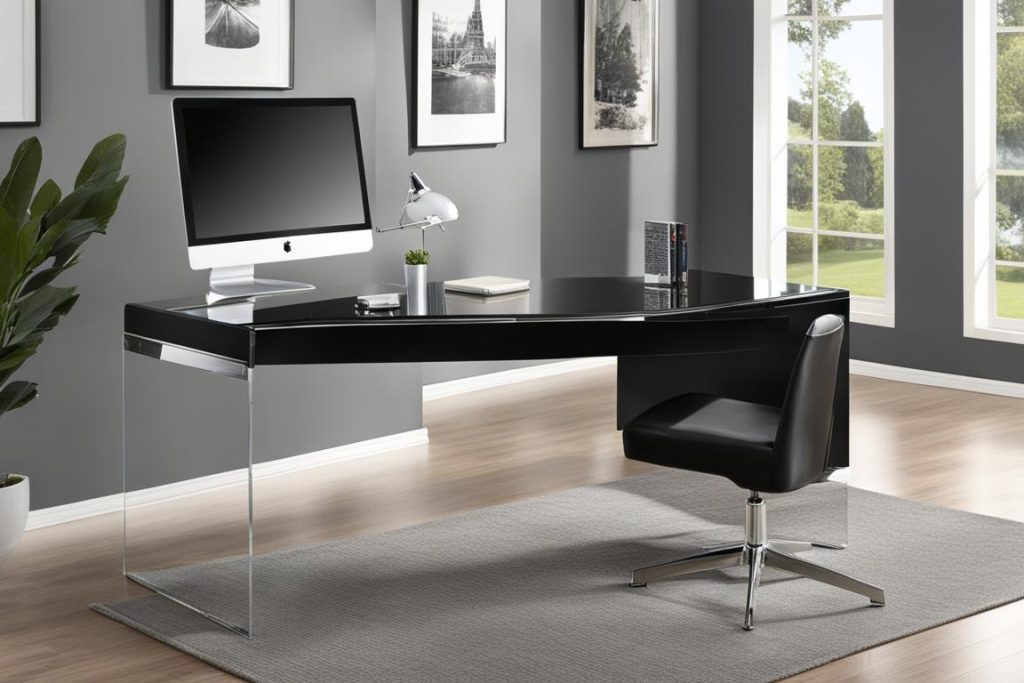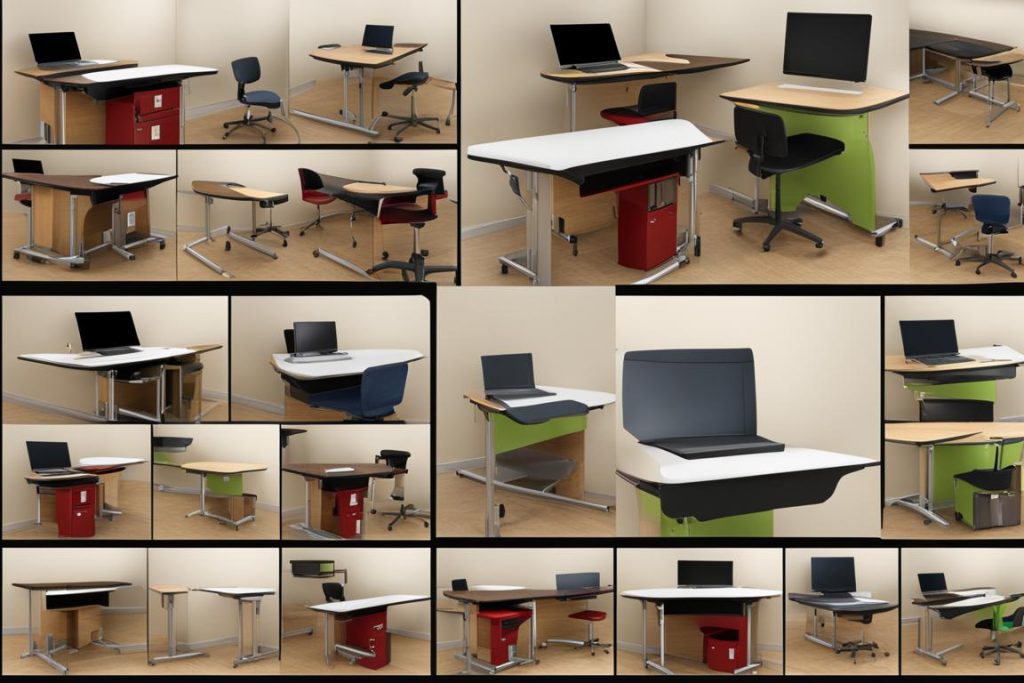When it comes to setting up a workbench, one of the most crucial considerations is determining the ideal working height. After all, the right workbench height can significantly impact your comfort, productivity, and overall well-being. But what exactly is the best workbench height for you? In this article, I will explore the factors to consider and provide some tips for finding the optimal workbench height.
Factors to Consider When Determining Your Workbench Height
Your height and physical attributes play a significant role in determining the recommended workbench height. Taller individuals may benefit from a higher workbench to avoid straining their back or shoulders, while shorter individuals may find a lower workbench more suitable.
In addition to your physical attributes, the type of work you do should also be considered. If you primarily use hand tools, a lower workbench height may provide better control and precision. On the other hand, if you use power tools or perform tasks that require more leverage, a higher workbench height may be more appropriate.
Another important factor to keep in mind is any existing physical conditions or limitations you may have. It’s crucial to consider these factors when determining the perfect workbench height, as it can significantly impact your comfort and efficiency while working. By taking into account your height, the type of work you do, and any physical limitations you may have, you can select the ideal workbench height that suits your specific needs.
Tips for Adjusting Your Workbench Height
Adjusting the height of your workbench is essential to ensure comfort and productivity during your woodworking projects. Here are some valuable tips and techniques to guide you through the process:
Evaluate your comfort level
Start by assessing how your current workbench height feels. If you experience any discomfort or strain in your back, shoulders, or wrists, it may be an indication that an adjustment is needed. Pay attention to your body’s natural alignment and make note of any areas that feel strained or uncomfortable.
Consider your physical attributes
Take into account your height and physical attributes when determining the ideal workbench height. Taller individuals may find a higher workbench more comfortable, while shorter individuals may prefer a lower height to avoid reaching or straining. Remember, the goal is to maintain a comfortable and natural posture that allows for efficient and precise work.
Explore adjustable options
If you’re unsure about the perfect workbench height for you, consider investing in an adjustable workbench or adding adjustable legs to your existing one. This allows you to experiment with different heights until you find the one that suits you best. Adjustable options offer the flexibility to adapt the workbench height based on your specific projects and tasks.
By following these tips and techniques, you can fine-tune your workbench height to optimize your woodworking experience. Remember, finding the ideal height is a personal journey that requires experimentation and adjustments. Prioritize your comfort and ergonomic needs, and make incremental changes until you discover the perfect workbench height for you.


Conclusion
Determining the ideal working height for a workbench is a personalized process that takes into account various factors. While there are general guidelines and recommendations available, such as measuring the height of your wrist crease or using four hand-spans, it’s crucial to prioritize your comfort, physical attributes, and the type of work you do. Experimentation and adjustments will likely be necessary to find the best workbench height for your specific needs.
Remember, strict measurements and formulas should not overshadow ergonomic considerations and personal preferences. The goal is to create a workbench height that allows you to work comfortably and efficiently, minimizing strain and maximizing productivity. Whether you are a tall individual needing a higher workbench or perform tasks that require more leverage, or a shorter person preferring a lower workbench height for control and precision, finding the optimal height will contribute to your overall satisfaction with your workspace.
So, start by considering your height, physical attributes, and the type of work you predominantly undertake. Then, make incremental adjustments such as cutting the legs down to a lower height or adding a secondary surface if needed. You may also explore the option of using height-adjustable workbench systems or adjustable legs for easy customization. Remember, your workbench height is unique to you, and finding the right balance will enhance your overall work experience.
FAQ
What is the ideal working height for a workbench?
The ideal working height for a workbench can vary depending on factors such as personal preference, physical attributes, and the type of work being done. According to experts, a good starting point is to measure the height of your wrist crease when standing upright. For most people, this measurement equates to a workbench height of around 34 to 38 inches. However, other experts recommend heights of 38 inches or even 40 inches. It’s important to consider individual comfort and ergonomics when determining the working height for a workbench.
What factors should I consider when determining my workbench height?
When determining the ideal working height for your workbench, you should consider your height and physical attributes. Taller individuals may require a higher workbench to avoid straining their back or shoulders, while shorter individuals may find a lower workbench more comfortable. The type of work being done should also be taken into account, as the height can affect control, precision, and leverage. Additionally, any existing physical conditions or limitations should be considered.
What should I do if my current workbench height is causing discomfort?
If your current workbench height is causing discomfort or strain, there are a few options for making adjustments. One option is to cut the legs of your workbench down to a lower height, but this may affect stability and functionality. Adding a secondary surface, such as a duck board, can increase the height if needed. Adjustable legs or height-adjustable workbench systems are also options for easy customization. Remember to measure and make incremental adjustments to find the most comfortable and ergonomic workbench height for you.
How important is finding the optimal workbench height?
Finding the optimal workbench height is important for working comfortably and efficiently. It can help minimize strain and maximize productivity. While there are general guidelines and recommendations, it’s ultimately a subjective process that depends on individual comfort, physical attributes, and the type of work being done. Experimentation and adjustments may be necessary to find the perfect workbench height for your needs.
Can I use a standard measurement or formula to determine the ideal workbench height?
There are general guidelines and recommendations, such as measuring the height of your wrist crease or using hand-spans, but it’s important to prioritize ergonomic considerations and personal preferences over strict measurements or formulas. The ideal workbench height is subjective and may vary for each individual. It’s best to experiment and make adjustments based on your own comfort and needs.






